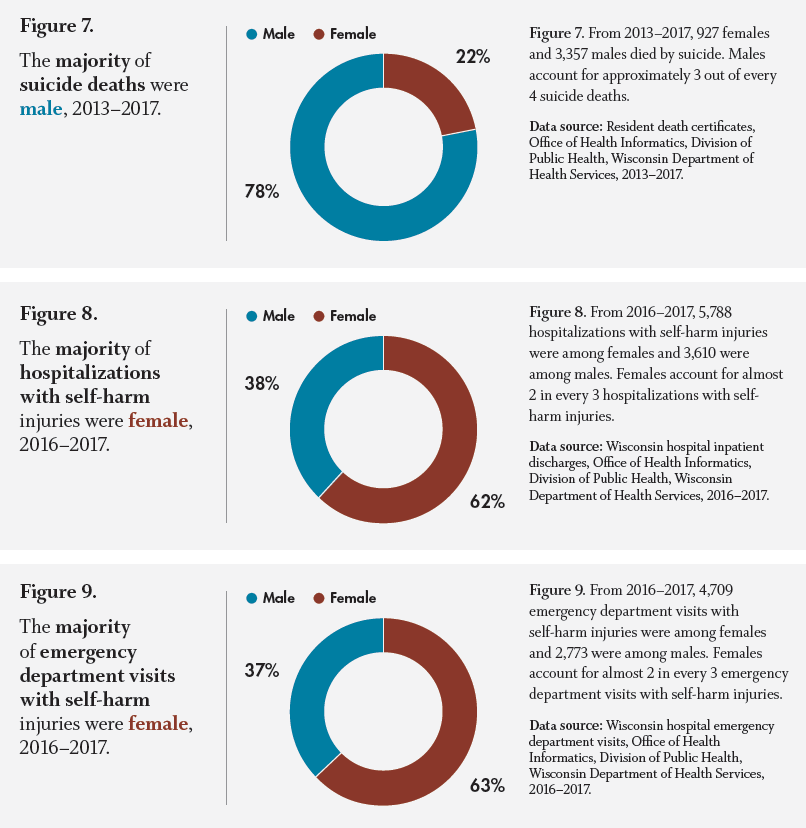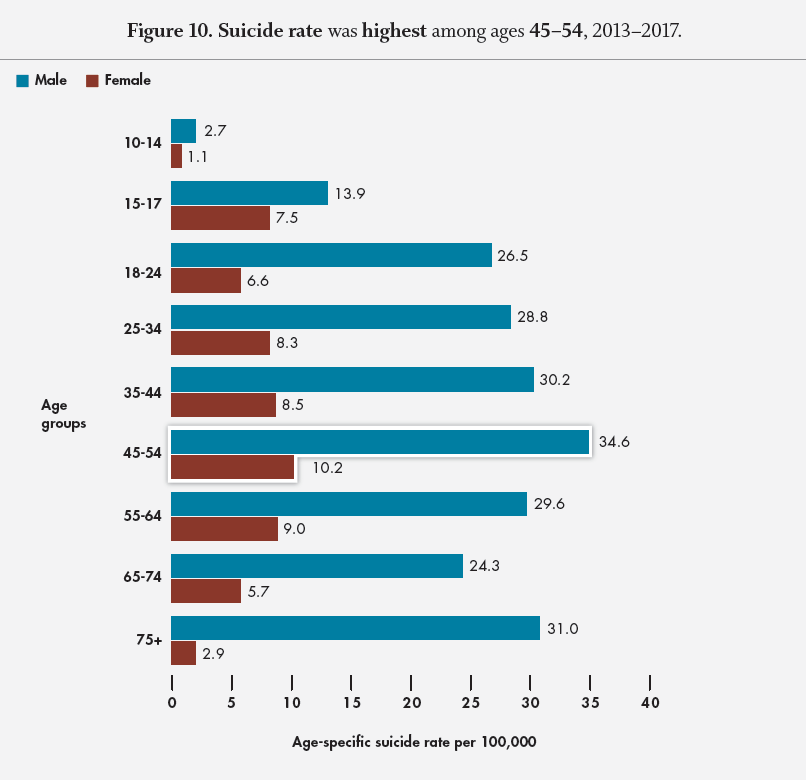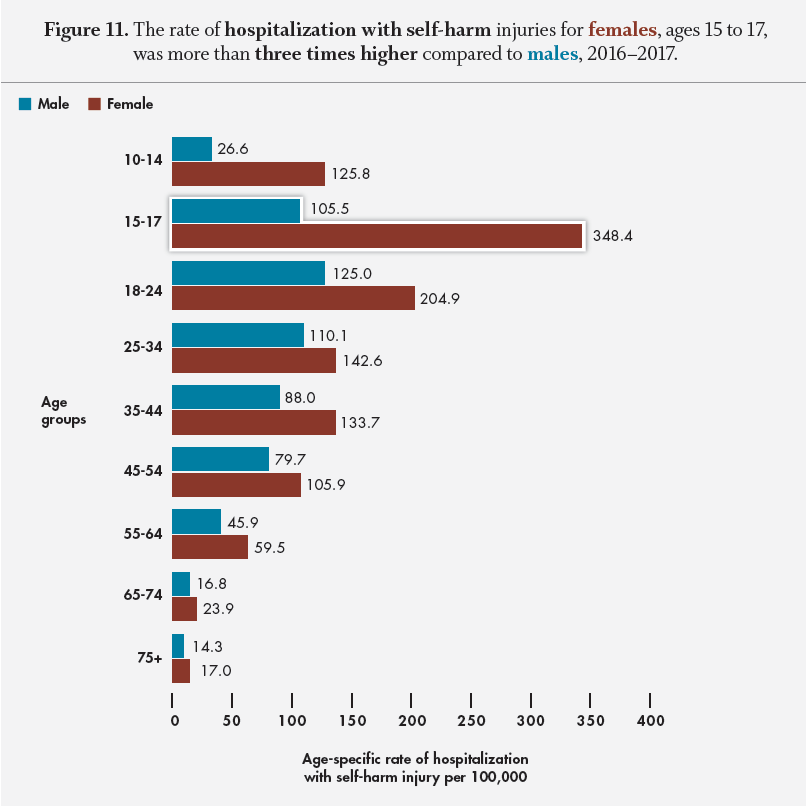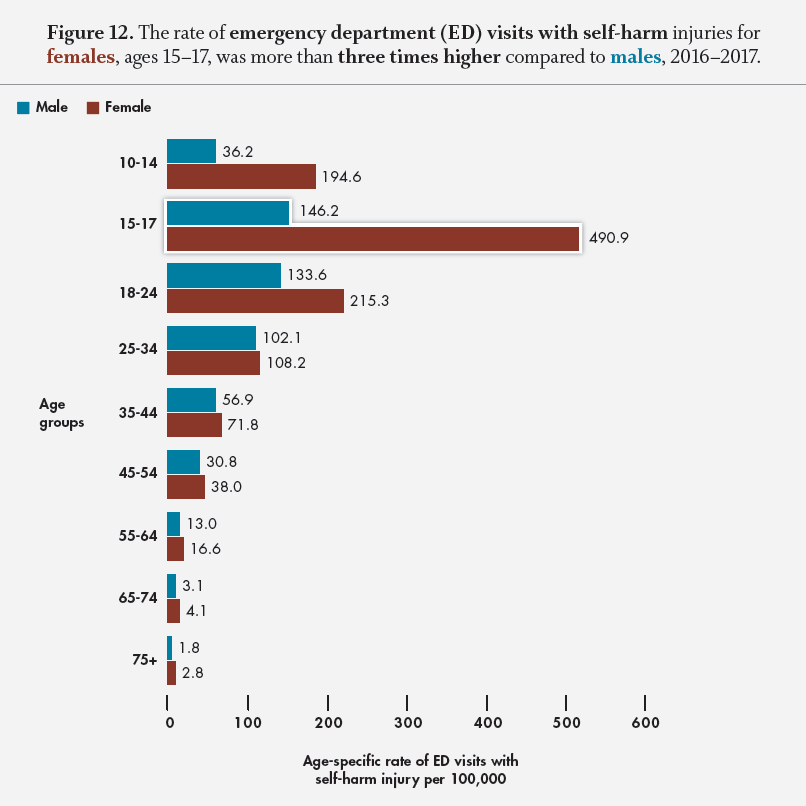Men are at a greater risk of dying from suicide than women. In contrast, women are seen in hospitals and emergency departments for suicide attempts and other self-harm injuries more often than men. These differences may be explained by men choosing more lethal methods of suicide, such as firearms, which reduce the window of opportunity for intervention and saving lives. Other factors include the person’s intent, health status, and proximity to family members or friends who have the ability to intervene before a self-harm injury or suicide attempt becomes fatal.
Suicide and self-harm injuries also vary depending on a person’s age. For the period of 2013–2017, suicide rates peaked for males and females ages 45–54. Many factors can contribute to this variation, including an increased likelihood of chronic disease, disability, or terminal illness, insufficient social support, access to lethal means, and feelings of isolation due to life circumstances in adults. Conversely, emergency department visits and hospitalization rates with self-harm injuries were highest among younger ages. Lower rates of suicide among youth may be related to limited access to more lethal means of suicide, such as firearms.


Figure 10. Suicide rates were highest for both males and females ages 45–54. Among females, suicide rates decreased after this peak for all older age groups. Among males, suicide rates decreased for the 55–64 and 65–74 age groups but then increased again for those 75 and older.
In addition, the age-specific suicide rate increased among all age groups (10–14, 15–17, 18–24, 25–34, 35–44, 45–54, 55–64, 65–74, 75–84, and 85+) from 2000–2017. The greatest increase was among those aged 55–64, in which the rate more than doubled (137%) over this time period (from 9.4 to 22.3 per 100,000).

Figure 11. The population with the highest hospitalization rate with self-harm injuries was females ages 15–17. When considering only males, the rate of hospitalization with self-harm injuries was highest for those ages 18–24. Rates of hospitalization with
self-harm injuries decreased after age 17 for females and after age 24 for males.

Figure 12. Rates of emergency department visits with self-harm injuries were highest among those ages 15–17 for both females and males. Rates of self-harm emergency department visits decreased after age 17 for both females and males.